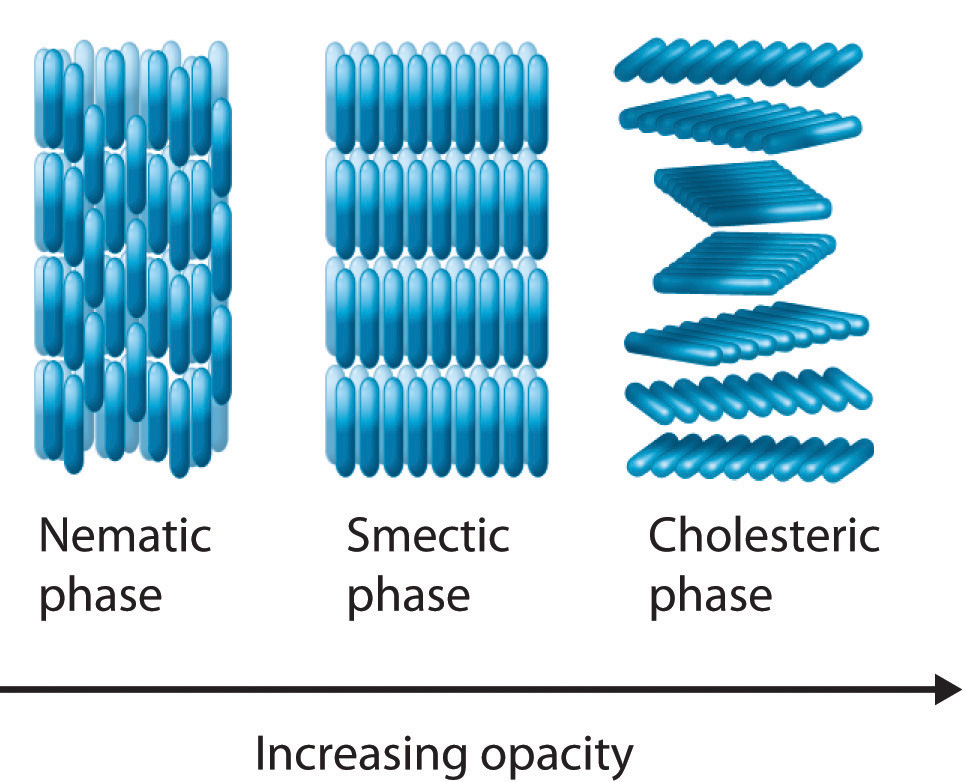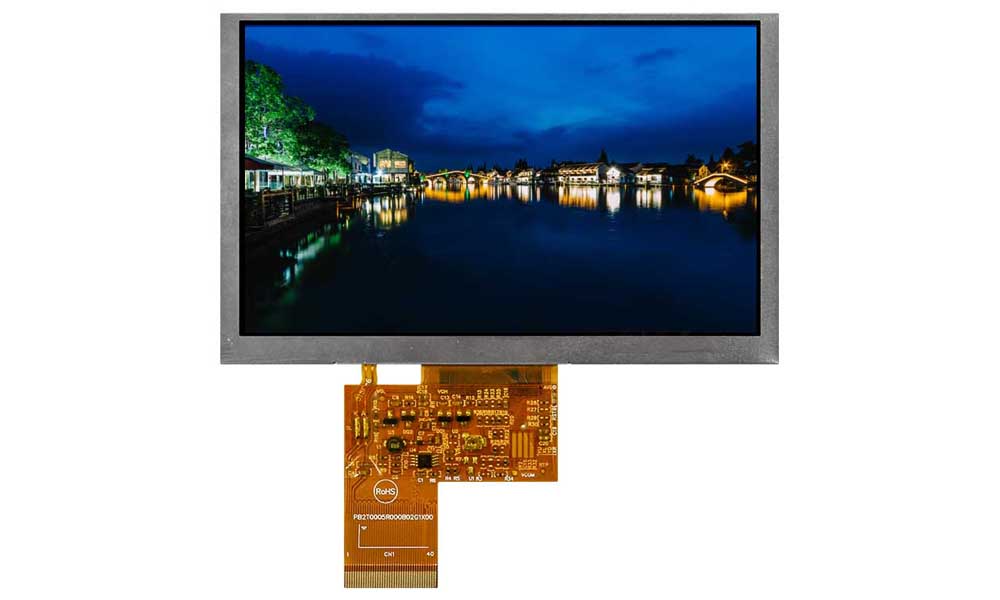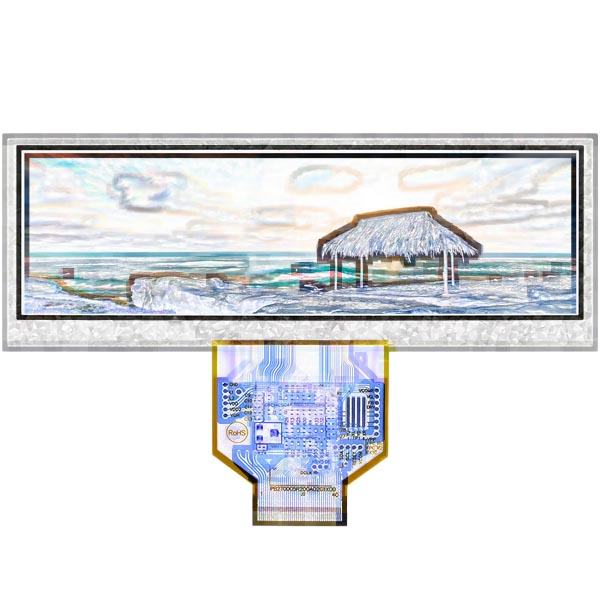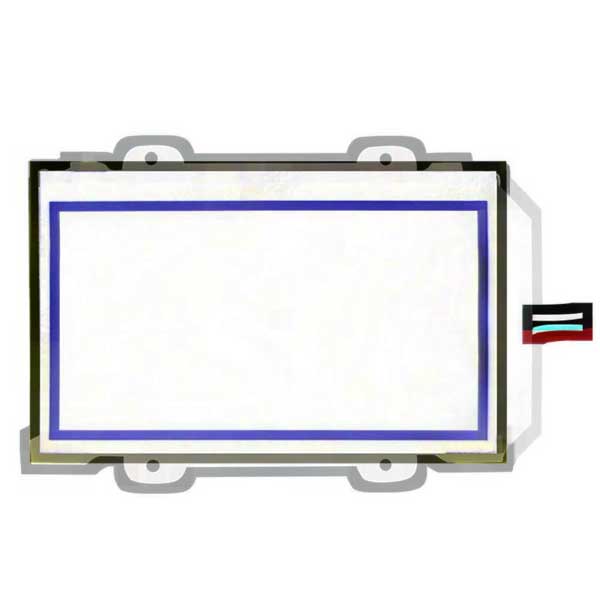Once upon a time, scientists and engineers embarked on a quest to transform the display industry. They delved into the unknown world of liquid crystals, a substance that was once considered a mixture of solid and liquid states. Their explorations led them to discover the nematic phase, the first of many phases in which liquid crystals could exist. They experimented with these substances and soon made a groundbreaking discovery – the twisted nematic (TN) phase. This discovery was the beginning of a new era in display technology. The twisted nematic phase was a turning point in display technology, as it allowed for the creation of TN display technology. This technology works by twisting the liquid crystal molecules. And then, controlling their alignment using electric fields.
This results in a clear and vivid display that is both efficient and cost-effective. TN displays work by twisting liquid crystal molecules. When an electric field is applied, light can pass through and form the image on the screen. TN displays are quick to respond, making them great for things like video games and videos. TN displays have both good and bad points, like any other technology.
One big downside was that the image quality would become worse when viewed from an angle that was too far off-center. Despite this issue, TN displays still had many positive aspects that made them appealing to consumers. Over time, TN displays have evolved into a more advanced and sophisticated technology. With improvements in both the quality and efficiency of the displays, TN displays continue to play a crucial role in the display industry. They are now a staple in our daily lives, powering our smartphones, laptops, and televisions.
Come along with us as we discover the world of TN liquid crystals. We’ll explore its different phases, such as the nematic phase, smectic phase, and cholesteric phase. And see how this technology has changed the display industry and affected our daily lives. We’ll dive into the science behind liquid crystals and learn about the creation of TN technology. You’ll also find out how TN displays function and discover both their strengths and weaknesses.
Get ready to understand this amazing technology that has made a lasting impact! The different stages of liquid crystals are interesting to learn about. We will take a closer look at three phases: nematic, smectic, and cholesteric. This will give you a better understanding of the amazing world of TN liquid crystals. Did you know that TN liquid crystals started as a scientific experiment? Now, they are a big part of the display industry and have changed the way we use technology.
So, sit back, relax, and let us guide you through the fascinating world of TN liquid crystals. Whether you’re a tech enthusiast, a student, or someone who wants to know more about the technology that powers our devices, this journey is for you.
Come with us to learn about TN liquid crystals. We’ll explore their history, what they’re like now, and what they’ll be in the future. See how this twisted technology changed display forever.
1. The science of liquid crystals: Understanding the nematic phase
The nematic phase is a crucial part of the liquid crystal world, and it has a big impact on the functioning of TN displays. But what exactly is it?
The nematic phase is one of the basic states that liquid crystals can exist. Liquid crystals are substances that have the properties of both liquids and solids. In the nematic phase, the liquid crystal molecules are lined up in a specific way, but they are still free to flow and move like a liquid. This gives the nematic phase its unique characteristics, which are essential for TN displays to work. Think of it like a line of people holding hands. They’re all lined up in the same direction, but they can still move and flow together. That’s like how the liquid crystal molecules are arranged in the nematic phase. So how does this phase relate to TN displays?

Well, in TN displays, the liquid crystal molecules are twisted to create the unique properties that make TN displays so special. This twisting gives the display its ability to control the flow of light and produce the images we see on our screens. The nematic phase is a key component of TN displays, but it’s not the only one. We’ll dive deeper into the other phases of liquid crystals in future articles. For now, it’s important to understand the basics of the nematic phase and how it relates to TN displays.
So, to sum up, the nematic phase is an important state of liquid crystals that plays a big role in how TN displays work. By understanding the nematic phase, we can get a better grasp of the incredible technology behind our screens. The nematic phase is the first of many phases in which liquid crystals can exist. It is characterized by liquid crystal molecules that are aligned in a certain direction but not in a fixed position. This makes the nematic phase a key factor in the functioning of TN displays. Think of the nematic phase as the starting point for TN displays.
Scientists and engineers worked with liquid crystals to understand their properties and behavior. Through their experiments, they discovered the nematic phase and the twisted nematic (TN) phase. The TN phase is what makes TN displays possible. By twisting the liquid crystal molecules and controlling their alignment using electric fields, we can create a clear and vivid display. The image is formed on the screen by light passing through the twisted liquid crystals when an electric field is applied.
The nematic phase is an essential component of TN displays, as it provides the foundation for the creation of a twisted nematic field. This field allows for the control of the liquid crystal molecules and results in a clear and vivid display. One of the benefits of TN displays is that they are quick to respond, making them great for video games and videos. But, like any technology, TN displays have both good and bad points.
One downside is that the image quality becomes worse when viewed from an angle that is too far off-center. Despite this issue, TN displays still have many positive aspects that make them appealing to consumers. By understanding the nematic phase, we gain a deeper appreciation for the science behind TN displays. Liquid crystal molecules are twisted to create TN technology. This technology has revolutionized the display industry and affects our daily lives.
So, now that you have a better understanding of the nematic phase, let’s continue our journey into the world of TN liquid crystals. Who knows what other amazing discoveries await us in this twisted and turned world?
2. Twisted Wonder: An in-depth look at TN (Twisted Nematic) display
Have you ever wondered how the screens of your devices display images and videos so vividly? Well, it all starts with the science of liquid crystals. And one of the key players in this science is the Twisted Nematic (TN) phase. TN displays work by twisting liquid crystal molecules and using electric fields to control their alignment. This results in a clear and vivid display that is both efficient and cost-effective. The creation of TN display technology was a major turning point in the display industry and has had a lasting impact on our daily lives. But what exactly is the TN phase, and how does it work?
Let’s take a closer look. Liquid crystals are fascinating substances that exist in a state between solid and liquid. They have unique properties that make them perfect for use in displays. In the nematic phase, the liquid crystal molecules are aligned in a particular direction, but they are not twisted.
However, when scientists and engineers discovered the twisted nematic (TN) phase, everything changed. In the TN phase, the liquid crystal molecules are twisted, creating a new type of display technology. When an electric field is applied to the twisted liquid crystal molecules, they change their alignment. This allows light to pass through, forming the image on the screen. This new type of display technology offered several advantages over traditional display technologies. For example, TN displays are quick to respond, making them great for video games and videos.
Additionally, they are more cost-effective and efficient than other display technologies. Of course, like any technology, TN displays have their pros and cons. One of the major downsides of TN displays is that the image quality decreases when viewed from an angle that is too far off-center. TN displays are used a lot in things we use every day, like phones, computers, and TVs, even though they have a weakness.
The reason for this popularity is its affordability and fast response time. Are you ready to discover the magic behind your device screens? Meet the TN (Twisted Nematic) phase, a revolutionary technology that has transformed the display industry as we know it. Learning about the TN phase will give you a greater appreciation for the technology in your devices. Discover the science behind your device screens with the fascinating subject of the TN phase.
TN phase revolutionized the tech world and brings your favorite media to life! So let’s take a closer look at this twisted wonder and uncover its secrets. Get ready to be amazed by the power of the TN phase!
3. The phases of liquid crystals: From nematic to smectic and cholesteric
Welcome to the fascinating world of liquid crystals! If you’re reading this, you’ve likely already learned about TN (Twisted Nematic) display, the twisted technology that has changed the display industry forever. But did you know that TN displays are one phase of the amazing world of liquid crystals?
In this article, we’re going to dive deeper into the different phases of liquid crystals, from nematic to smectic and cholesteric. You’ll learn about the science behind these fascinating substances and see how they have evolved. Let’s start with the nematic phase, the first phase of liquid crystals that was discovered by scientists and engineers on their quest to transform the display industry.
The nematic phase is characterized by the alignment of the liquid crystal molecules in one direction. This alignment allows for the creation of TN displays, where the liquid crystal molecules are twisted and their alignment is controlled using electric fields. The result is a clear and vivid display that is both efficient and cost-effective.
Next up is the smectic phase, which is characterized by the formation of layered structures in the liquid crystal molecules. This phase is particularly interesting because it allows for the creation of displays with a wide viewing angle. This is especially important for applications like televisions where a large viewing angle is desirable.
Finally, we have the cholesteric phase. In this phase, the liquid crystal molecules form a helical structure that reflects light in a specific color. This makes the cholesteric phase ideal for creating displays with a colorful, three-dimensional appearance. So, there you have it – a brief overview of the different phases of liquid crystals and what makes each one unique.
As you can see, liquid crystals are fascinating substances with a wide range of applications. Whether you’re a tech enthusiast, a student, or curious about the world around you, learning about liquid crystals is sure to be an engaging and educational experience.
4. The birth of TN technology: A timeless revolution in display
Have you ever stopped to think about the display technology in your phone, computer, or TV? Chances are, it’s a Twisted Nematic (TN) display. But do you know the story behind this technology and how it changed the world of displays forever?
Two researchers, George Heilmeier and Martin Schadt started experimenting with liquid crystals in the early 1970s.
They found that applying an electric field to a twisted liquid crystal layer could control the orientation of the crystal molecules.
This control over the crystal molecules allowed them to control the light passing through them.
This discovery marked the beginning of the development of TN display technology.
This was a game-changer, as it allowed them to create fast, efficient, and low-cost display technology. The TN technology caught on, and by the 1980s, it was already being used in calculators and digital watches.
The technology then evolved and became the go-to choice for computer monitors and TV screens. The reason for its widespread use was its affordability, fast response time, and good image quality. It was also much lighter and thinner compared to other display technologies of that time, making it ideal for portable devices.
As technology progressed, TN displays became even better. They now have higher resolution, better color reproduction, and improved viewing angles. It’s safe to say that TN displays have come a long way from their humble beginnings in the 1970s.
But the impact of TN technology goes beyond the technology itself. It paved the way for the display industry to evolve and advance, leading to the development of more advanced display technologies like OLED and AMOLED. The TN technology revolutionized the world of displays, and its impact can still be felt today, decades later.
The birth of TN technology marked a turning point in the world of displays. It brought about a revolution that forever changed the way we view and interact with information. TN displays continue to be a popular choice for various devices, and it’s all thanks to the groundbreaking work of George Heilmeier and Martin Schadt. So, next time you’re using a device with a TN display, take a moment to appreciate the timeless revolution that made it possible.
5. How TN display technology shines: A guide to its working principles
Are you curious about how your phone or laptop screen shows clear, sharp images? Well, it’s all thanks to a technology called Twisted Nematic (TN). This technology is based on liquid crystals that are arranged to produce the images you see on your screen.
How does TN display work? There are two polarizing filters, a backlight, and a layer of liquid crystals between two transparent electrodes. The liquid crystals are twisted at a specific angle, and the filters let light pass through in one direction. The backlight provides light, and the electrodes apply an electrical charge to the liquid crystals, causing them to untwist and change their alignment. This lets or blocks light from the backlight from reaching your eyes.
TN displays manipulate the liquid crystals by applying different voltages to specific areas of the electrodes. This causes the crystals to untwist and change orientation, letting or blocking light from the backlight. This process happens several times per second, creating the illusion of a moving image.
What’s special about TN displays is that they are fast and affordable. They have a quick response time, producing smooth images with minimal blurring. Additionally, the technology is simple and cheap, making it a popular choice for devices like smartphones, laptops, and gaming monitors.
TN displays also have a wide viewing angle, allowing you to see images clearly from different positions. This is especially helpful for gaming monitors.
In summary, TN display technology is a game changer in the world of displays. It provides high-quality images, fast response times, and good viewing angles, and is inexpensive. Next time you’re using your phone, laptop, or gaming monitor, take a moment to admire the wonderful technology that makes the images appear.
6. The pros and cons of TN: evaluating the advantages and disadvantages
The Twisted Nematic (TN) display technology has been a game changer in the world of displays.
TN displays are used in many different devices, from small calculators to big televisions.
The reason they are so popular is that they are great! But as with any technology, TN displays also come with their own set of pros and cons. In this article, we’ll take an in-depth look at the advantages and disadvantages of TN displays. Pros:
- Affordability: one of the biggest advantages of TN displays is their affordability. TN displays are an affordable option compared to other display technologies. This makes them a great choice for people who are watching their budget.
- Fast Response Time: TN displays are quick to update, making them perfect for games. They show fast-moving images without smudging, giving you a better look.
- High Brightness: TN displays offer high brightness levels, which makes them ideal for use in bright environments. This high brightness level makes it easy to view the display, even in outdoor settings or under bright lighting conditions.
Cons:
- Limited Viewing Angles: one of the biggest disadvantages of TN displays is their limited viewing angles. This means that when you look at the display from an angle, the colors can appear washed out, and the contrast can deteriorate. This can make it difficult to view the display from multiple angles.
- Poor Color Reproduction: TN displays are known for their poor color reproduction. This is because the technology used in TN displays does not allow for a wide color gamut, resulting in colors that appear washed out or oversaturated.
- Low Contrast Ratio: TN displays don’t show colors as vividly as other displays. The difference between the lightest and darkest colors on the screen is not very big, making it hard to see different shades of the same color.
To wrap things up, while TN displays have their own set of advantages and disadvantages, they still offer great value for the price. The fast response time, high brightness, and affordability of TN displays make them ideal for many applications. However, if you’re looking for a display with excellent color reproduction and viewing angles, you may want to consider other display technologies. It comes down to your individual needs and preferences.
References
- Cruickshank, E., Salamończyk, M., Pociecha, D., Strachan, G. J., Storey, J. M., Wang, C., … & Imrie, C. T. (2019). Sulfur-linked cyanobiphenyl-based liquid crystal dimers and the twist-bend nematic phase. Liquid Crystals, 46(10), 1595-1609.
- Yu, G., & Wilson, M. R. (2022). All-atom simulations of bent liquid crystal dimers: The twist-bend nematic phase and insights into conformational chirality. Soft Matter, 18(15), 3087-3096.
- Votava, M., & Ravoo, B. J. (2021). Principles and applications of cyclodextrin liquid crystals. Chemical Society Reviews, 50(18), 10009-10024.
- Schadt, M. (2015). Nematic liquid crystals and twisted-nematic LCDs. Liquid Crystals, 42(5-6), 646-652.
- Tamaoki, N. (2001). Cholesteric liquid crystals for color information technology. Advanced Materials, 13(15), 1135-1147.
- Gray, G. W., & Kelly, S. M. (1999). Liquid crystals for twisted nematic display devices. Journal of Materials Chemistry, 9(9), 2037-2050.






